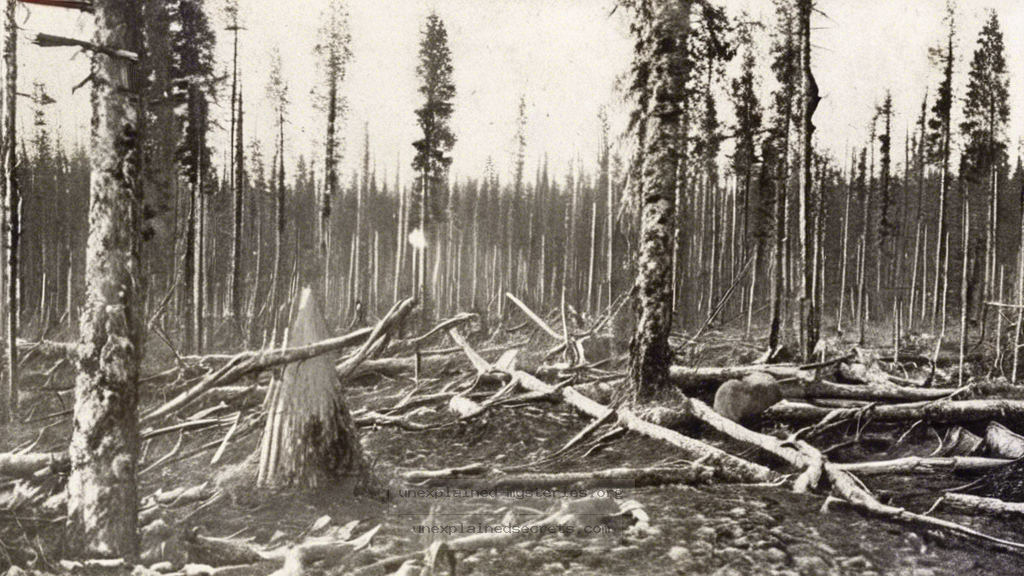What Causes the Mysterious Tunguska Event of 1908?
What Causes the Mysterious Tunguska Event of 1908?
The Tunguska Event remains one of the most intriguing scientific anomalies in history. On June 30, 1908, an enormous explosion rocked the remote Siberian landscape, flattening over 2,000 square kilometers of forest near the Tunguska River. This explosion was so powerful that it is estimated to have been equivalent to 10-15 megatons of TNT, yet no impact crater was ever found. The question of what caused the Tunguska Event has baffled scientists for over a century, leading to various theories ranging from comet impacts to nuclear explosions. Understanding this phenomenon is crucial as it raises significant implications for planetary defense and our understanding of cosmic events. 💡
Historical Context of the Tunguska Event
The Tunguska Event occurred in a time when the world was still grappling with the aftermath of the Industrial Revolution. In 1908, the scientific community was beginning to make significant strides in understanding meteorology, geology, and astronomy, yet many phenomena still defied explanation. The explosion went largely unnoticed by the outside world until a Russian scientist, Leonid Kulik, led an expedition in 1927 to investigate the site. His findings revealed the monumental scale of destruction and ignited global interest in what had transpired that fateful day.
Interestingly, the event occurred in a sparsely populated area, leading to minimal human casualties—only three deaths were officially recorded. However, the impact on the environment was catastrophic, with an estimated 80 million trees flattened, and the event was so bright that it reportedly illuminated the night sky in Europe. This phenomenon attracted the attention of scientists and amateur enthusiasts alike, setting the stage for numerous hypotheses. ⚠️
Core Theories Behind the Tunguska Event
Over the years, several theories have been proposed to explain the Tunguska Event. The most prominent ones include:
- Asteroid or Comet Impact: The leading hypothesis is that a small asteroid or a comet entered the Earth’s atmosphere, exploded in an airburst, and caused the massive destruction.
- Natural Gas Explosion: Some theorists suggest that a pocket of natural gas beneath the Earth’s surface ignited, although this theory lacks substantial evidence.
- Nuclear Explosion: A fringe theory posits that the explosion was a result of a secret nuclear test, which is impossible considering the timeline and lack of evidence.
- UFO-related Incident: Conspiracy theorists have even suggested that the explosion was linked to extraterrestrial technology or a UFO crash.
Practical Evidence and Investigations
The scientific community has extensively studied the Tunguska Event, with research ranging from geological surveys to satellite imagery analysis. In 1999, a Russian expedition used advanced technology, including radar and infrared methods, to analyze the site. They discovered an abundance of micro-particles similar to those found in meteoritic material, supporting the impact theory.
Moreover, tree-ring analysis conducted in the surrounding area indicated a significant growth anomaly corresponding to the year of the event, further confirming the timeline of the explosion. This evidence aligns with the asteroid impact hypothesis, suggesting a high-energy event that caused widespread ecological disruption. Additionally, scientists have noted that the characteristics of the explosion are consistent with an airburst, where an object disintegrates at a high altitude before reaching the ground.
Comparative Analysis: Similar Events Around the World
The Tunguska Event is not an isolated phenomenon; there have been other recorded instances of similar explosions. For instance, the Chelyabinsk meteor explosion in 2013, which occurred over Russia, released about 470-500 kilotons of energy. However, unlike Tunguska, Chelyabinsk did produce a small impact crater and left behind physical evidence of the meteoric material.
| Event | Date | Location | Estimated Energy Released (TNT Equivalent) |
|---|---|---|---|
| Tunguska Event | June 30, 1908 | Siberia, Russia | 10-15 Megatons |
| Chelyabinsk Meteor | February 15, 2013 | Chelyabinsk, Russia | 470-500 Kilotons |
| Overtoun Bridge Incident | Ongoing | Scotland | N/A |
Alternative Perspectives on the Event
While the asteroid impact theory has garnered the most support, alternative explanations have emerged. Some researchers advocate for a more interdisciplinary approach, considering the psychological and societal impacts of such a profound event. For instance, the lack of immediate understanding and communication may have led to cultural myths and legends surrounding the explosion, illustrating how human perception can shape explanations in the absence of scientific clarity.
Moreover, the Tunguska Event has entered popular culture, inspiring conspiracy theories and fictional representations in books and films. These narratives often focus on extraterrestrial involvement or secret government experiments, further complicating the public’s understanding of the actual scientific findings.
Common Misconceptions Clarified
Several misconceptions surround the Tunguska Event that can obscure the truth and hinder scientific discourse. Here are a few:
- Myth 1: The explosion was caused by a nuclear bomb.
This theory has been debunked, as no evidence supports any nuclear activity in the area during that time. - Myth 2: The event was a meteorite impact.
While an asteroid or comet is a likely cause, the lack of a crater suggests it was not a traditional impact event. - Myth 3: The explosion was widely reported at the time.
In fact, it received little attention until decades later, mainly due to its remote location.
Best Practices for Investigation and Study
Investigating events like the Tunguska Event requires a multidisciplinary approach. Here are some best practices for researchers and enthusiasts:
- Data Collection: Utilize satellite imagery and geological surveys to gather data on the site.
- Collaboration: Work with experts from various fields, including astronomy, geology, and cultural studies, to enhance understanding.
- Public Engagement: Foster public interest through educational outreach, emphasizing the importance of planetary defense.
Future Developments and Ongoing Research
Research into the Tunguska Event is ongoing, with modern technology providing new insights. For instance, advancements in meteor tracking systems could improve our ability to predict and prevent potential impacts from near-Earth objects. Moreover, researchers are exploring the environmental impact of the event, including its effects on local wildlife and ecosystems, which could inform future ecological studies.
In addition, international cooperation is essential in studying cosmic threats, with programs like NASA’s Planetary Defense Coordination Office actively working to identify and monitor potentially hazardous asteroids. The lessons learned from Tunguska could help shape future policies and technologies aimed at safeguarding our planet. ✅
Conclusion
The Tunguska Event serves as a reminder of the unpredictable nature of our universe and the importance of science in unraveling its mysteries. As we continue to explore and understand such phenomena, we not only gain insights into our past but also equip ourselves for future challenges. Whether it be through the lens of geology, astronomy, or cultural studies, the Tunguska Event remains a testament to the power of curiosity and inquiry in the face of the unknown. 🌌
Other Articles
Recent Posts
- What Happened to Flight MH370? The Conspiracy Theories That Still Haunt Us
- What Secrets Lurk Within the Walls of the Infamous Trans-Allegheny Lunatic Asylum?
- What Evidence Supports the Existence of Bigfoot in the Pacific Northwest?
- What Happened to the Indus Valley Civilization? Unraveling the Mysteries of Ancient Urban Life
- Can Telepathy Be Scientifically Proven Through Laboratory Evidence?







